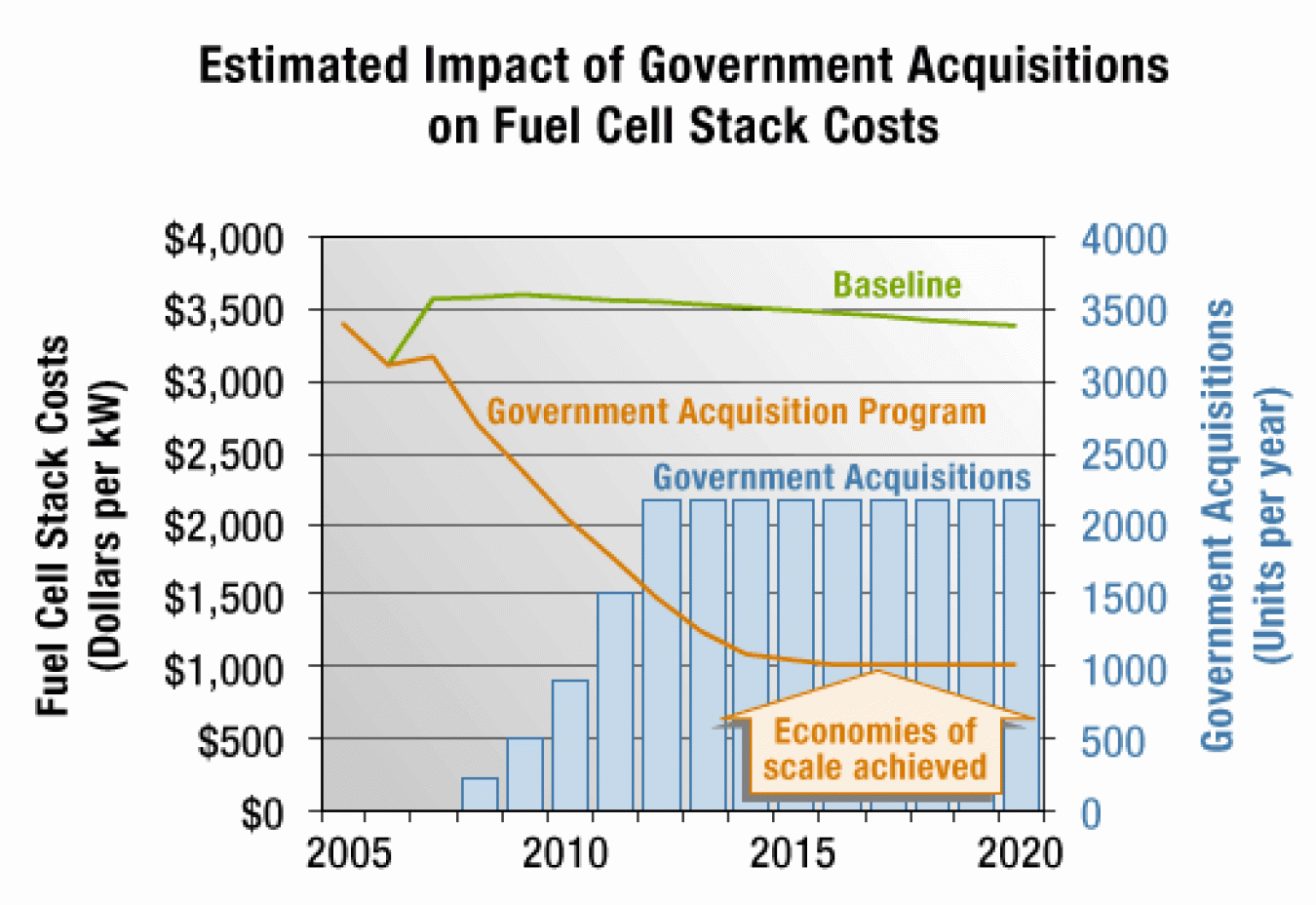Federal Facilities Guide
Many private sector organizations—grocers, banks, tire and hardware companies, logistics providers, and others—have begun to realize the value of using fuel cells to support their operations. And they aren't the only ones. Federal agencies across the country are incorporating advanced energy technologies, such as fuel cells, into their facilities.
Federal Deployment and Demonstration
Government adoption of early market fuel cell applications is critical. Federal agencies not only demonstrate leadership by using new technology to improve efficiency and reduce operations costs but also help the economy grow.
Government acquisition can:
- Create the economies of scale needed to further reduce fuel cell costs
- Build a domestic manufacturing and supplier base
- Create jobs associated with manufacturing fuel cells and related hydrogen technologies, fuel cell maintenance and support systems, and hydrogen production.
According to an Oak Ridge National Laboratory study, a government acquisition program focused on fuel cells for backup power and specialty vehicles such as forklifts would result in manufacturing economies of scale that could enable fuel cells to be cost-competitive with conventional technologies such as batteries and small combustion engines. For more information about this study, view the full report.

This chart shows how a government acquisition program might reduce fuel cell stack cost over time. Without such a program, costs remain relatively steady because projected purchases would not be sufficient to drive costs down to competitive levels.
With support from the Hydrogen and Fuel Cell Technologies Office, the U.S. Department of Energy (DOE) is identifying ways to incorporate fuel cells into its facilities, with an initial focus on supporting data-center operations and national laboratory critical-load needs. It is also working with other federal agencies to demonstrate and deploy fuel cell forklifts, emergency backup power, and primary power systems.
These federal partnerships have resulted in projects that will provide valuable data on the status of the technologies in real-world operation and information that will be used to validate the benefits of the technologies. Notable efforts include:
- The Defense Logistics Agency's effort to place approximately 100 forklifts at its distribution centers across the country
- The Department of Defense's planned installation of 18 fuel cell systems to provide backup power for military installations in California and South Carolina
- The Federal Aviation Administration's planned installation of approximately 25 additional fuel cell backup power systems at remote telecommunication towers
- The Postal Service's operation of two fuel cell vehicles in regular mail-delivery service.
As with DOE's existing fuel cell vehicle demonstration projects, project data will be made available to the public as composite data products, giving potential users important information about the technologies' performance in practical, real-world operation.
Commercially Available Fuel Cell Products
Fuel cells are commercially available today for some applications. The Fuel Cell and Hydrogen Energy Association maintains member product lists of commercially available hydrogen and fuel cell products.
Federal and state financial incentives are available to help minimize the cost of hydrogen and fuel cell projects.

